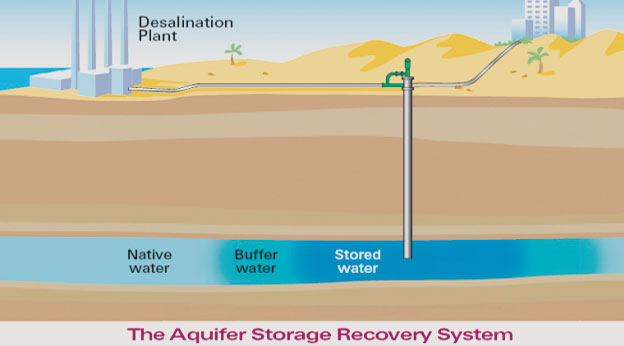

Muscat, Sept 17 - Diam, formerly the Public Authority for Electricity and Water, is in the process of evaluating the application of Aquifer Storage and Recovery (ASR) systems for the Sultanate.
An international tender has been called for providing consultancy services for conducting a feasibility study on ASR applications.
ASR is a process of storing water in a well when water is available and recovering water from it when it is required.
ASR systems are expected to provide cost-effective solutions to Oman’s water needs, storing water when the demand is low and recovering it during emergencies or when the demand is high.
Large volumes of water are stored deep underground, eliminating the need for large and expensive concrete surface reservoirs.
In many cases, the storage zones are aquifers that have experienced long-term decline in water levels due to heavy pumping to meet the increasing urban and agricultural water needs.
Groundwater levels can be restored if adequate water is recharged.

The main driving force behind the current rapid implementation of ASR technology around the world is the water supply economics. ASR systems can meet the water needs at a lower cost.
Compared with alternatives that require the construction of water desalination plants and surface reservoirs to meet the rising peak demands, cost savings could be considerable.
The regional water managers are constructing ASR systems to ensure reliable water supply during emergencies such as the incidents of contamination at sea, for instance, the ‘red tide’ phenomenon in the Gulf of Oman, oil slicks at sea or transmission pipeline
breaks, etc.
ASR is being increasingly considered for the development of strategic water reserves to provide water supply security.
At the regional operating ASR sites, mostly desalinated drinking water is stored. When recovered from storage, this water usually requires only disinfection before it is sent out to the water distribution systems.
Zainab al Nassri
Oman Observer is now on the WhatsApp channel. Click here



